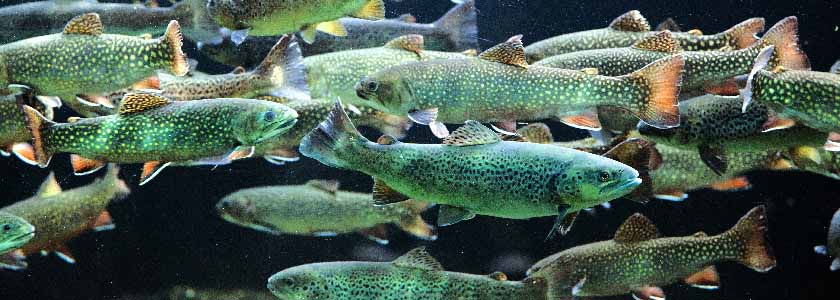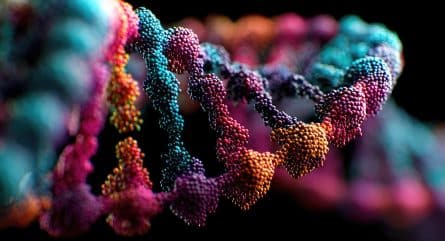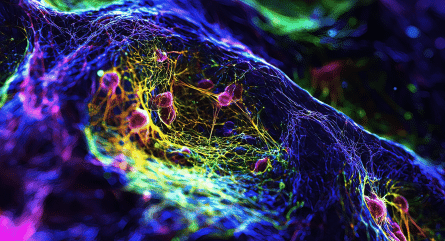We’ve all heard about the amazing advances made possible by CRISPR. From making crops that can better feed our growing population to the promise of new treatments for genetic disorders, CRISPR has completely changed how scientists tackle genome editing and has sped up the pace of research.
While CRISPR is still making its way into our everyday life, gene editing in general has been around for a long time. From salmon that grow faster to cows that never grow horns, new gene-edited foods are popping up all the time. But while the headlines seem miraculous, there’s a lot that goes into a CRISPR experiment. Scientists need to carefully design experiments to overcome common challenges and then make sure everything goes according to plan. It turns out CRISPR is more than just putting a CRISPR protein and guide RNA into a cell.
Guide RNA
The main feature that makes CRISPR so revolutionary compared to older gene editing technologies is how easy it is to program with a guide RNA. To understand a guide RNA you need to understand a bit about RNA and DNA. These make up the genetic codes of all living things and even though they are slightly different they can interact with each other. When scientists talk about DNA or RNA sequences, they represent them using the four-letter code of A, C, G and T (RNA uses U instead of T). In a cell, the sequence of these letters encodes proteins, which are the molecules that perform all the necessary tasks in a cell. DNA and RNA are basically the instructions for running the cell.
In a CRISPR experiment, the guide RNA contains a sequence of letters (nucleotides) that are designed to pair with specific letters in the DNA sequence of the genome. Designing an RNA sequence that pairs specifically with DNA is straightforward since we know exactly which RNA nucleotides will pair with which DNA nucleotides. For example, guanine (G) always binds to cytosine (C), so to target some DNA that contained Gs you would include Cs at those positions in the guide RNA sequence. Older tools like zinc fingers and TALENs used engineered proteins which could take weeks or months to develop because we don’t fully understand how to design a protein that only binds to one specific DNA sequence. As described in Wired, “Compared to TALENs and zinc-finger nucleases, this was like trading in rusty scissors for a computer-controlled laser cutter.”
That said, we still don’t fully understand all the factors that make the difference between a guide RNA sequence that’s just OK and one that’s excellent. Using a guide RNA that doesn’t work very well makes it harder to successfully complete an experiment. Sometimes a guide that we predict will work well just doesn’t pan out, and sometimes a guide that we think should be very specific ends up cutting many different parts of the genome. These off-target edits can be a big problem, especially when we are trying to develop new therapies for humans. When asked about his company'mixs focus on anti-CRISPR proteins that turn off CRISPR once editing is complete, David Rabuka of Acrigen Biosciences said, “Curbing off-target activity would be a big contribution to the field of CRISPR therapeutics.” We don’t always know where off-target editing happens in the genome, and even if we do it’s often hard to predict what effect it’ll have.
This is one of the concerns raised by those opposed to genetically modified organisms entering the food chain. Scientists are building new computer algorithms to better predict the best guide RNAs, but right now it’s important to validate how well a guide RNA works before getting too far along with an experiment. We can get different editing efficiencies depending on how well a guide RNA pairs with its genomic target. Guides can sometimes pair with unintended locations in the genome, so checking for off-target editing helps ensure we are only changing what we intended to in the genome. Doing this up front can save a lot of headaches down the road. It’s kind of like getting your car tuned up before a long road trip: a bit of a pain now but better than breaking down on the highway.
Getting CRISPR into the cell
The next big challenge is taking the guide RNA and the CRISPR nuclease and getting them inside the cells so they can bind to and edit their genomes. But cells can be pretty picky about what they let in and they usually aren’t open to a protein that originally came from bacteria like the CRISPR nuclease. Just like you’re careful about what you eat so you don’t get sick, cells are careful about what they let inside.
There are lots of methods scientists use to get CRISPR reagents into cells but it’s crucial that it’s done right, otherwise an experiment might never succeed. Scientists can attach the CRISPR reagents to specialized fat molecules that get through the cell membrane (lipofection) or shock the cells with an electric current to open small pores to let the CRISPR reagents inside (electroporation). To make genetically modified mice, scientists will sometimes inject these reagents directly into embryos and, if they are working with plant cells, they might bombard the cells with gold beads coated in CRISPR nucleases and guide RNAs.
This is all a bit like delivering a package to someone. Sometimes the regular mail is fine, but sometimes you need a courier or a bike messenger depending on where things need to go. This is hard enough in cell culture, but it’s a huge challenge when we talk about treating a human with a genetic disease. “The challenge is getting gene editors to the right place at the right time in the right amount,” according to Dan Anderson at MIT.
Finding the right cells
So, once the CRISPR reagents get into the cell we will have the mutation we were looking for, right? Not so fast! When CRISPR nucleases cut genomic DNA inside a cell, the cell tries to fix that break. A break in the genetic material is like cutting an instruction manual in half–it isn’t very useful until it’s put back together. When it comes to CRISPR, it’s actually this cellular repair process that makes the mutation, not the CRISPR reagents themselves.
The problem is that cells don’t always repair breaks in the same way. The cell’s priority is to put its genome (or instruction manual) back together even if it makes a few small mistakes along the way. This means that different cells can have different mutations in them even if they received the same CRISPR reagents.
Scientists are usually working with lots of cells at the same time rather than just one, so they are trying to deliver the CRISPR reagents to all of the cells at once. The final result is usually a mixed population of cells where some have the intended edits, some will have no edits, some will have unexpected edits, and some won’t have even received the CRISPR reagents in the first place. Now, if enough cells have correct edits, it might be OK to have some cells in the mix that don’t. For example, scientists can use CRISPR to make cells produce heparin, a common anticoagulant prescribed to prevent blood clots. This could be much safer and more reliable than the current method of extracting heparin from pig intestines which has recently been disrupted. In a setup like this it’s ok if a few of the cells aren’t edited and don’t make heparin if enough of them have the new mutation so they produce it.
However, there are times when it’s important that every single cell in the mix has the exact same mutation. CAR T-cell therapy is an example of a human cancer treatment that can be made using CRISPR. It’s important that all the cells have the same mutation introduced into them, otherwise there’s a risk that the CAR T-cells could attack normal tissue in the patient instead of just cancer cells. To do this, scientists will select a single cell that has the correct mutation and allow it to divide into many cells that are all identical clones of one another.
Design well, and your experiments will thank you for it
There’s no doubt CRISPR is changing the world around us and it will keep doing so for years to come. The technology is not as simple and straightforward as the headlines might make it out to be, but it’s definitely a huge leap forward. The biggest advances are going to come from those who not only imagine new solutions to diseases and challenges, but also take the time to think through every step of an experiment before they even get started.

























